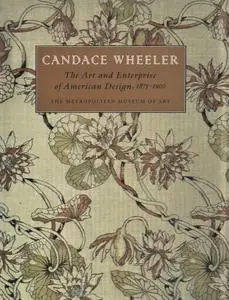Amelia Peck, Carol Irish, "Candace Wheeler: The Art and Enterprise of American Design, 1875-1900"
English | 2001 | ISBN: 1588390020 | PDF | pages: 294 | 52,2 mb
English | 2001 | ISBN: 1588390020 | PDF | pages: 294 | 52,2 mb
Candace Wheeler (1827-1923) changed the course of textile and interior design in the nineteenth-century America and was a driving force behind the professionalization of women in the design field. Inspired by the embroideries produced by England's Royal School of Art Needlework, which she saw at the 1876 Centennial Exposition, Philadelphia, Wheeler founded the Society of Decorative Art in New York. The organization offered instruction in the applied arts to women and helped them sell their work, providing some measure of economic independence. Wheeler was acquainted with leading figures in the New York art world and, as a textile specialist, went into partnership with Louis Comfort Tiffany in an interior design firm; the company was commissioned to decorate lavish interiors for the Seventh Regiment Armory, the Union League Club, and the homes of wealthy New Yorkers. In 1883 Wheeler formed her own firm, Associated Artists, which produced both hand-wrought and machine-made textiles and was staffed entirely by women.
Artistically, Wheeler had begun by taking as her model the accomplishments of advanced British designers such as William Morris and Walter Crane. In the course of her career she absorbed elements of Japanese design and developed a sophisticated American textile style in which the natural forms of native plants were interpreted as free-flowing designs. Moving away from the opulent works of early commissions, she took up the challenge of producing fabrics that were not only beautiful but also affordable and practical for use in middle-class homes. To accomplish this she explored unusual weaving and printing techniques, and in some cases invented new ones.
Appointed director of design for the Woman's Building of the 1893 World's Columbian Exposition in Chicago, Wheeler helped establish an important, visible role for women in the arts. In the course of her life she also wrote influential books on decorating and cofounded a summer artists' colony. The story of this strong-willed, talented woman's career is also a revealing social history and a view of the transformation of American taste as the country grew increasingly confident and cosmopolitan.
My Links
No mirrors please!
No mirrors please!



